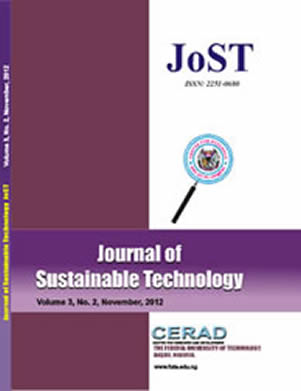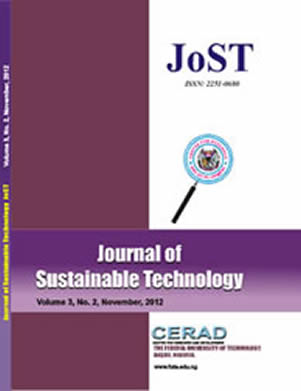Freshly harvested leaves of Cassava (Manihot esculenta), Moringa (Moringa oleifera),
Fluted pumpkin (Telfairia occidentalis), Bitter leaf (Vernonia amygdalina) and African basil
(Ocimum gratissimum) were air-dried and milled to produce leaf meals and analyzed for proximate
composition, vitamins, minerals. The anti-nutrients typified by phytate, phytin-P, oxalate and tannin
were also quantified. Thereafter, the five leaves were mixed in equal proportion (1:1:1:1:1) to
produce composite leaf meal and this product was also analyzed. The results showed that the five
selected leaves on the average contained 28.76g/100g crude protein (range 21.98 - 33.15 g/100g),
9.18g/100g crude fibre (range 7.66 - 11.66g/100g), ether extract and ash averaged 4.67 g/100g
and 12.77g/100g, respectively while gross energy averaged 397.45kcal/100g dry matter (DM).
Vitamin C, the most abundant vitamin in the selected leaves averaged 135mg/100g, while vitamins
A, E, K, B1, B2, B3, B5 and B9 averaged 5.78, 1.48, 2.43, 6.41, 3.25, 5.22, 5.05 and 5.65mg/100g,
respectively. Among the macro minerals, K which was the most abundant ranged 1.22-1.94g/100g,
while Mn, the most abundant of the microminerals ranged 46.99 - 84.71mg/kg. However, the levels
of anti-nutrients were considered generally low. Given their high yield potentials, the leaves could
play valuable roles as supplemental nutrient sources to some livestock in most developing countries
of the world.
Keywords: Leaves, composite leaf meal, nutrients, anti-nutrients



